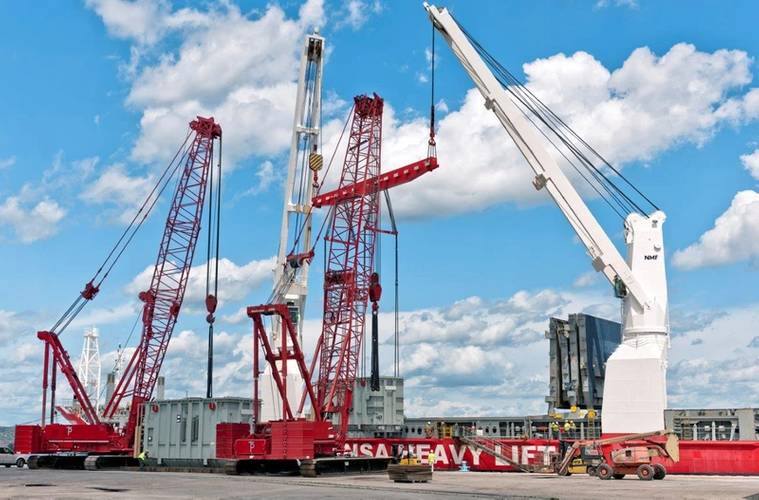General Cargo Shipments Keep U.S. Great Lakes Ports Busy
The St. Lawrence Seaway reported that year-to-date total cargo shipments for the period March 22 to October 31 were 28 million metric tons, down 7% over the same period in 2012.
With only two months left in the shipping season, U.S. ports are hustling to move as much cargo as possible.
"The Seaway's principal commodities - iron ore, coal and grain - helped move the scales in the right direction for cargo tonnage handled on the Great Lakes-Seaway System," said Rebecca Spruill, Director of Trade Development at the Saint Lawrence Seaway Development Corporation. "Although the bi-national waterway figures are still below last year's levels, we're seeing solid evidence that the final two months of the 2013 navigation season will be extremely busy for our shipping industry."
For the second consecutive month, the Port of Cleveland reported a significant increase in general cargo tonnage. The increase for the month was up 20% (50,100 metric tons) compared to October 2012. To date, the port has moved 307,000 metric tons of cargo through its general cargo operation. This represents more than a 20% increase over the 2012 annual tonnage level, when the port moved 250,000 metric tons across its docks.
"This growth shows that there is a higher demand for steel in Northeast Ohio, and it indicates significant growth in the manufacturing sector," said Will Friedman, President and CEO of the Port. "Waterborne shipping is the most cost effective means of freight transportation, and the Port of Cleveland is an important link to get our local manufacturers the supplies they need to produce their products."
David Gutheil, vice president of Maritime & Logistics, added that the increased demand for steel from local processors and manufacturers, along with new business that continues to move through the port has led to the increase. "We expect a very strong finish to the 2013 shipping season, which could produce our highest annual tonnage level since the 2008 calendar year."
The Port of Duluth set a record in October with a special heavy-lift cargo.
On October 14, the port received four German-built electrical transformers, each weighing close to 300 tons, headed for Alberta, Canada as part of a major power transmission line project that will run from north of Edmonton to south of Calgary. This was the third of four shipments aboard Hansa Heavy Lift vessels from Antwerp. As with the previous shipments, this one included multiple crates of smaller components. The last shipment is scheduled to arrive at the end of November - bringing to 16 the total number of transformers discharged, along with nearly 500 crates, at the Port's only breakbulk terminal.
Lake Superior Warehousing Co. operates the terminal and its crews have been responsible for handling this series of shipments. "The Port Authority here in Duluth has created one of North America's highest caliber breakbulk terminals, one specifically engineered for large capacity jobs and multimodal connectivity," said Jonathan Lamb, Lake Superior Warehousing Co. president.
The Port of Indiana-Burns Harbor saw a 16% increase in total tonnage through the month of October marking the sixth consecutive month of increased shipments for the port this year.
"An increase in coke, steel and steel-related products as well as limestone are among this month's drivers," said Rick Heimann, port director for the Port of Indiana-Burns Harbor. "Additionally, the port received a project cargo shipment of 29 distillery tanks carried by a charter vessel out of Antwerp and bound for a brewery expansion in Chicago."
"With 35 million tons of maritime shipments being handled along Indiana's coastline by an extensive logistical network and infrastructure, the Port of Indiana-Burns Harbor is well positioned to serve customers throughout the Midwest," said Heimann. "We truly appreciate all the companies that have trusted us with their business which has allowed us to experience the volume growth over the last six months."
In addition to the uptick in general cargo traffic at the ports, U.S. grain remained a bright spot for the month. Nearly one million metric tons of U.S. grain moved through the System, representing a 6% increase year-to-date over 2012. Overall, cargo categories were down. As noted above, steel is driving tonnage for some U.S. ports, but iron ore and coal shipments remained down in October by 12.5 and 3% respectively.
Within the dry bulk category, scrap metal was up 49%. The liquid bulk category posted a 10% jump over the same time in 2012.















